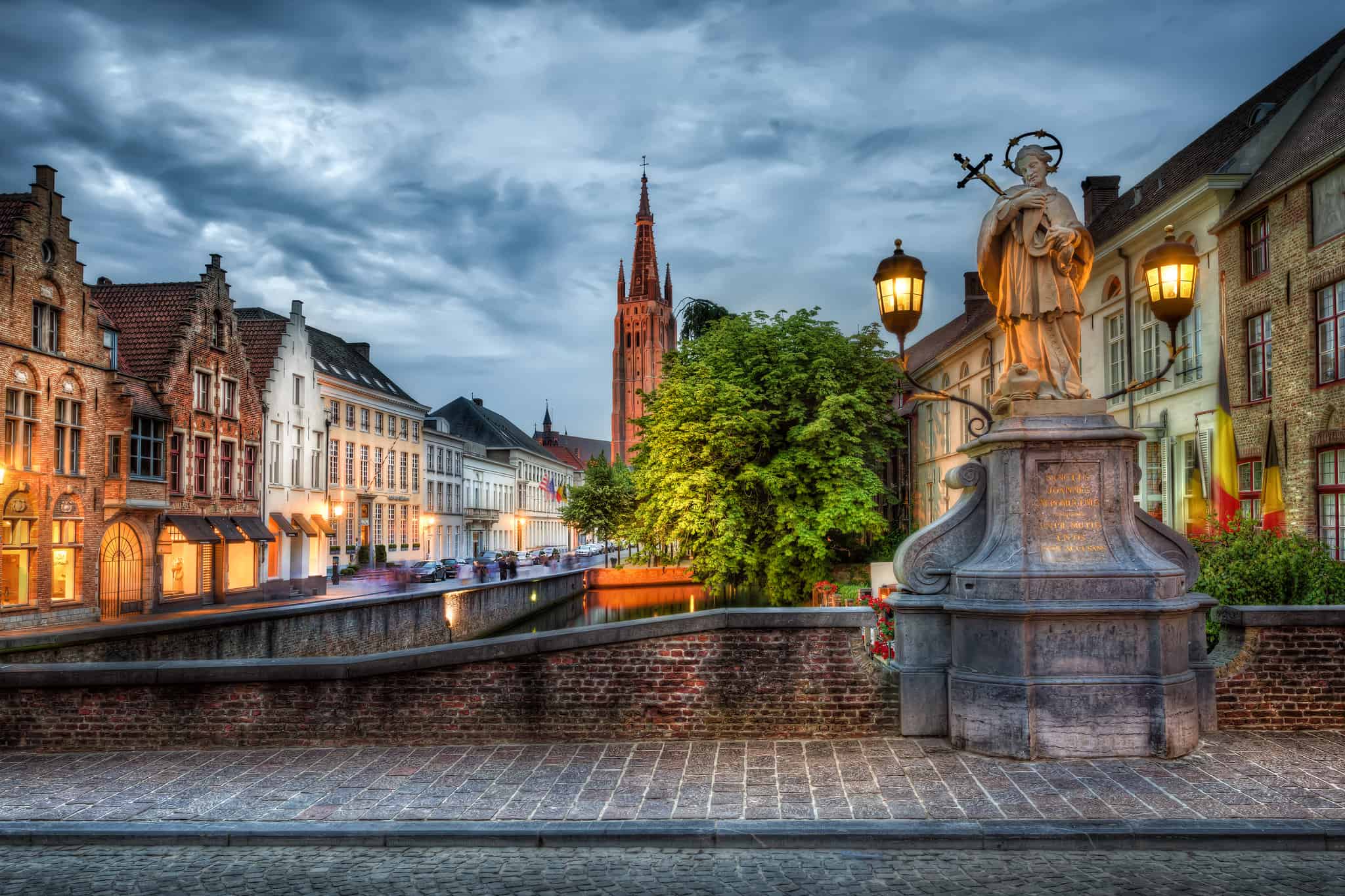 Creativecommons.org/Bert Kaufmann
Creativecommons.org/Bert Kaufmann
Bruges is a charming, picturesque town that is a delight to visit even if you get no farther than the Markt, the main square in the heart of the town. The medieval architecture is like something out of a fairytale, amazingly intricate lace is displayed in the shop windows and the chocolate is beyond amazing. You can spend an entire day in a well-positioned chair at a cafe and not tire of the view or the people watching. If you can manage to drag yourself away from the Markt though, there is some great art to be found scattered around the town.
The Church of Our Lady
If you’re also a fan of architecture, this church is a double-delight for you. It dates from the 13th, 14th and 15th centuries and is the tallest structure in the city with its 122.3-metre tower. After you finish enjoying the amazing brickwork of the exterior, step inside and head for the choir behind the high altar to see the gilded bronze effigies of Charles the Bold and his daughter duchess Mary.
The Madonna of Bruges is a marble sculpture created by Michelangelo and is quite different from his earlier depictions of the Madonna and Child. Rather than showing Mary gazing at her infant son, the Madonna of Bruges only lightly supports her son, a slightly older child that is preparing to take his first steps. Possibly intended as an altarpiece, the sculpture has all the complexity and heart-wrenching beauty of Michelangelo’s works in the Sistine Chapel and St. Peter’s Basilica in Rome.
This was the only sculpture by the artist to be removed from Italy during his lifetime. It was purchased by two merchants and brought to Bruges in 1504. Amazingly, it was removed from the city twice – in 1794 during the French Revolutionary Wars and again in 1944 during World War II. Both times it was subsequently returned and has remained in Bruges since 1946.
The sculpture sits behind protective bulletproof glass that was put up after the attack on Michelangelo’s Pieta in 1972.
Old St. John’s Hospital
Another two-fer, this one for history buffs, the hospital is next to the Church of Our Lady and is one of the oldest surviving hospital buildings in Europe. First used in the Middle Ages to care for travellers, the site later added a monastery and convent, finally evolving to an eight-ward hospital built around a central structure.
Today there is a museum in the 12th century chapel that displays some very questionable-looking medical instruments of the past and some curious hospital chairs. If you aren’t squeamish after seeing those seemingly tortuous implements, have a look at the 1679 painting that depicts an anatomy class. Yikes! There are quite few pieces by well-known Flemish Artists on display in the museum in addition to the general beauty of the chapel.
What you’re really here for, though, are the six pieces by Hans Memling, the 15th century master. The grandest of these is the reliquary of Ste. Ursula. This is an amazing gilded oak piece that looks like a miniature Gothic cathedral painted with scenes of her life. The triptych of St. John the Baptist and St. John the Evangelist is also quite stunning and was commissioned by the hospital for its altarpiece.
History (or hospital) buffs, don’t forget to duck into the rear room to see the restored 17th century apotheke (pharmacy).
The Basilica of the Holy Blood
This dates from the 12th century when it was built as the chapel for the home of the Count of Flanders. The lower chapel is stolid Romanesque but the upper structure is delightfully Gothic with all the elaborate additions that are so typical of the style. The stained-glass windows were made in 1845 and depict the rulers of Flanders from about 1400 to 1750. The statues and carvings on the staircase represent dukes and duchesses, not saints. Although both chapels are interesting to students of religion and architecture, you’ve come to see what’s kept in the upper chapel.
The Relic of the Precious Blood holds what is said to be a cloth stained with the blood of Jesus Christ. The relic is kept behind a very ornate silver tabernacle and is only available for viewing once a day. Even if you aren’t a believer, the reverence and pageantry that surrounds the phial and its presentation are a masterpiece to see.
The Procession of the Holy Blood takes place on Ascension Day and the arrival of the phial in Bruges is re-enacted. More than 3000 people take part in the procession which includes other religious scenes, choirs, dances and live animals. It is a highly reverent event and UNESCO has declared the procession to be a part of the Representative List of the Intangible Cultural Heritage of Humanity.
The Gruuthuse Museum
Louis de Gruuthuse was one of the richest men in town back in the 13th century and the house he lived in is maintained to show how the wealthy lived back in the Middle Ages. Wander through the rooms to see the collection that spans four centuries and consists of art, tapestries, silverware, dishes and just about everything needed for daily life. The former kitchen is stocked with pots, pans and utensils but the 15th century fireplace is probably the most interesting. The 16th century Flemish tapestries are spectacular and the terracotta bust of Charles V, Holy Roman Emperor is considered to be the prize piece.
“Gruut” was one of the major ingredients in beer back in those days, so finish your tour of the house properly by touring the Brouwerij de Halve Maan and see the ancient techniques that were used to brew beer and sample one of the fine brews offered today.


